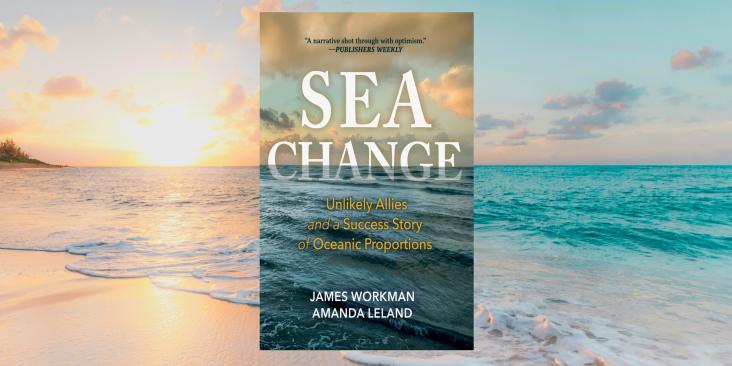
Your Health, Your Wallet, Your Future: Americans Can’t Afford EPA Rollbacks
This blog was written by: Aurora Barone, manager of economics and policy; Talley Burley, manager, climate risk and insurance; Jesse Gourevitch, economist; Abhinand Krishnashankar, senior economics and policy analyst; Jeremy Proville, director, economics.
The Clean Air Act, a landmark piece of U.S. legislation, has quietly been protecting not just our lungs, but also our wallets for many years. Then, on July 29, 2025, the U.S. Environmental Protection Agency announced a proposal to rescind a crucial part of this protection: the 2009 Endangerment Finding. The finding, rooted in extensive science with robust public input, determined that climate pollution threatens the public health and welfare of Americans. Now, the very real benefits – including economic benefits – stemming from this finding are at risk. Understanding what is at stake is more important than ever.
Americans face new and rising costs due to climate change.
The impacts of climate change are already costing us. Climate-related disasters already saddle the U.S. with an estimated $150 billion (about $460 per person in the US) bill each year. Studies project that a person born in 2024 could face nearly $500,000 in climate-related costs over their lifetime if we fail to take action.
These aren’t abstract numbers; they translate into tangible financial pressures. In fact, over half of Americans report that the consequences of climate change are already influencing major financial decisions, such as where to live or what career path to choose. Here are some ways climate change is already costing you:
- Higher energy bills: Climate change impacts on electricity transmission and distribution could cost between $120-380 billion in net present value. Disruptions to this system could reach $4.7 to $8.3 billion per year by 2090. More energy use during hotter summers could potentially lead to a net energy cost increase for consumers of 10 to 22 percent. And to compound these costs, the Trump administration has ordered uneconomic coal plants to run, which only means higher costs for Americans.
- Increasing insurance rates: The escalating frequency and intensity of extreme weather events, fueled by climate change, are hitting homeowners hard. There is clear evidence that insurers raise rates following wildfires and hurricanes. A Federal Insurance Office report found that those living in the highest climate-risk areas paid an average of $2,321 in premiums, a staggering 82% more than those in the lowest-risk areas.
- Costs of recovering and repairing your home: The cost of recovery is immense. FEMA projects that just one inch of floodwater can cause $25,000 in damages – a devastating sum for many American families. Retrofitting homes to be resilient against hurricanes or wildfires can cost tens of thousands, even up to $100,000 or more for measures like home elevation.
- Costs for renters: If you’re a renter, disasters could raise your monthly rent. One study tracked how rental markets shift after disasters like floods and storms, finding that rent increases hit low-income communities hardest. Low-income renter households signing a new lease face an estimated average rent increase of 5% in the year after a disaster and a further 6% increase two years after.
Studies project that a person born in 2024 could face nearly $500,000 in climate-related costs over their lifetime if we fail to take action.
EPA’s Proposal to Repeal the Endangerment Finding Will Raise Costs
EPA’s own proposal to repeal the Endangerment Finding and motor vehicle standards projects that it will increase costs for Americans:
- Raising fuel prices: The EPA’s regulatory impact analysis shows it will result in up to $350 billion more in costs for Americans, mostly by forcing Americans to spend more on fuel. The Trump administration’s own analysis cited in the proposal, shows that the proposal will make that fuel more expensive. IEA’s 2025 Annual Energy Outlook shows repealing the Endangerment Finding and motor vehicle standards will increase fuel prices by 25 cents per gallon in 2035 and 76 cents per gallon in 2050.
- Killing jobs: The Annual Energy Outlook analysis also shows repealing the Endangerment Finding and vehicle standards will cost jobs: 450,000 by 2035.
- Increasing climate pollution: This does not account for billions of tons of additional climate pollution that would be emitted into the atmosphere due to the proposal, which would lead to trillions of dollars in additional damages.
Clean solutions cut harmful pollution and save consumers money.
While we are already facing the costs of climate change, clean air and climate policy in the United States is creating economic benefits for Americans. In fact, one economic study shows that the benefits of air pollution regulation exceed the costs by 10 to 1. This means that for every dollar we spend on reducing pollution, we get $10 worth of benefits to our health, our climate, and our broader society.
Here’s how Americans’ wallets are benefiting from clean air and climate policy:
- Saving at the doctor, the pump, and the mechanic: The EPA’s 2024 emissions standards for passenger cars and trucks (model years 2027 and later) were projected to create $13 billion in annual health benefits from reduced air pollution, alongside over $46 billion in reduced annual fuel costs and nearly $16 billion in reduced annual maintenance costs for drivers. That’s an average savings of $6,000 over the lifetime of a new vehicle for consumers.
- Cheaper, cleaner electricity: It is cheaper to build and operate new solar and wind farms than to continue operating existing coal plants. For instance, research has shown that about 99% of the U.S. coal fleet is more expensive to operate than replacing plants with new local solar, wind or energy storage. As utility companies invest in clean electricity, electrification, and efficiency, it could save the average household $500 annually in reduced energy costs in the long run by stabilizing energy prices and reducing reliance on volatile fossil fuel markets.
- Lowering vehicle costs and expanding consumer choice: Customers’ electric vehicle (EV) options have improved significantly while becoming more affordable. In 2009, there was only one EV model available for purchase; now, there are over 70. EV range and capabilities have improved dramatically, with median range increasing from 82 miles in 2012 to 283 miles in 2024. Meanwhile, the cost of EV batteries declined by 90% between 2008 and 2023.
The Endangerment Finding is a rational, predictable framework for investing in clean solutions and cutting pollution, which strengthens the U.S. economy.
Since its adoption in 2009, the Endangerment Finding has helped strengthen the U.S. economy by creating a predictable framework for reducing climate pollution while supporting economic growth and creating new jobs.
- Economic and job growth: With the Endangerment Finding in place, regulated industries have continued to grow while reducing emissions. Automakers have invested nearly $200 billion in U.S. production to build clean vehicles over the last 10 years, supporting almost 195,000 jobs. In the oil and gas sector, since methane standards were adopted in 2016, U.S. gas production has increased by more than 40% and oil production has risen by almost 50%.
- Increasing U.S. competitiveness in global markets: Global markets are rapidly shifting toward demand for clean solutions and higher environmental standards. Without a credible domestic framework, U.S. producers and manufacturers risk losing access to these markets. Maintaining the Endangerment Finding and standards to reduce greenhouse gas emissions ensures that U.S. companies remain competitive in the global marketplace.
- Protecting investments: The predictability fostered by the Endangerment Finding has strengthened companies’ abilities to innovate and invest in new technologies. Without the Endangerment Finding, businesses would be left in the dark about future requirements, making it harder to plan long-term and manage risk.
The evidence is clear: the Endangerment Finding doesn’t just protect the environment—it’s a cornerstone of our economic stability. It empowers the EPA to implement measures that reduce harmful pollution, leading to healthier communities, lower healthcare costs, reduced energy expenses, and a more resilient economy. Striking down the Endangerment Finding would not only trample overwhelming scientific evidence but would also dismantle the very framework that helps shield American families and businesses from the escalating harms and financial burdens of climate change











